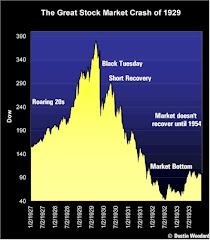The Question?
Simply, are government pensions fair and sustainable? Legacy costs continue to be a major issue for the Canadian economy. Legacy costs are the expense that businesses have as an obligation to fund retirement plans and health benefits of retired workers. These costs have been a major barrier in the recent efforts to keep many Canadian businesses solvent. The problem of legacy costs has been highlighted for Stelco, Air Canada, General Motors and many other Canadian companies.
BACKGROUND
Most Canadians save money in a pension plan or an RRSP to accumulate savings for retirement. Whatever is available in the fund at retirement will produce the retirement income. In contrast, the federal sector pension plan, like other public pensions, is a defined benefit plan that provides an inflation protected salary, based on years of service and.the average of the salary of the worker over the last five years of service. Assuming that a public sector employee works the full 35 years of maximum of pensionable service, a public sector employee is guaranteed an income in retirement of upwards of 70% of their final working salary or wage. This income replacement is guaranteed for life and guaranteed to increase every year.
If legacy costs at businesses are a problem for the Canadian economy, what about public employee pensions?
There is a huge difference in the type of pension plans that the public sector has and those of the private sector. Defined benefit plans are considered to be the gold-plated plan.
In Canada there are a total of 4.5 million defined benefit pension plan members. In the public sector there are about 2.5 million defined benefit pension plan members. This leaves 2 million DB plan members in the private sector. In Canada, 85% of private sector workers do not enjoy defined benefit plans; they are almost exclusively public sector plans. The few remaining gold-plated plans that do exist are causing serious difficulty for Canadian companies.
Public Employee Pensions
Most Canadian have no guaranteed pension at all. In one Ontario public employee pension plan, the average annual pension is $42,000. In addition most pension members are also eligible for full CPP Canada Pension Plan of $10,980 per year. This amount is guaranteed for life, eligible for annual increases and will a major portion pay to a surviving spouse for life
In order to fund these retirement income requirements governments in Canada have created huge pension funds, funded by Canadian taxpayers. For example, one of the largest in Canada the Ontario Teachers Pension Plan has accumulated over $110 Billion in assets. Statscan estimated in Ontario the total value of infrastructure at $90Billion. This includes roads, bridges, power plants, water treatment systems, airports and many other public works. Since 1990 Ontario taxpayers have funded more into this single pension plan than its entire infrastructure. This is only one of several huge pension plans in Ontario.
The National Post recently asked… “Why do these giant public pension plans exist? … They are, essentially, wealth confiscated by governments… using money taxed from all their constituents. The rest of the public pension investment activity is on behalf of unionized monopoly government service providers — hydro workers, police, municipal employees, and teachers. All are set to receive relatively lavish pensions paid for by Canadian taxpayers who have no comparable pension plans.”
Statistics Canada estimates that a pensioner living on $40,000 of pension income has the equivalent income of a “working” Canadian earning $52,000. This is accounted for by the fact there is a dramatic cost of living drop in retirement. The biggets factor is that most Canadians have paid down their mortgages, for many working Canadian this is 30% of income. Also there is a lower tax burden on pension income when compared to working income. For example no CPP contributions are made and there are no contributions for Employment Insurance.
The most recent Statistics Canada figures show the average Canadian earning scarcely $40,000 per year. Since the average salary of government workers are higher than the the average of their private sector counterparts, assuming that these workers work for 30 – 35 years, they can expect to retire with relatively comfortable with pensions higher than the average working Canadian wage.
Contribution Rates
There exists a huge gap between what public sector employees receive for their retirement benefits and what other Canadians receive. Most Canadian businesses feel overtaxed and they along with all Canadians fund most of the public sector pension costs.
A self-employed businessperson pays CPP premiums at 9.9% of his income with the hope of receiving a $10,980 a year CPP pension (this reflects employer and employee contributions, based on a maximum income level of $46,300). Under the current CPP model, the public sector would be expected to match the employer contribution of 4.95 % of income, based on a maximum salary of $46,300. Currently a public sector employee funds into their pension at a rate of 4.9% of annual salary up to $46,300 and 8.4% of annual salary above this amount. The federal actuary has estimated these types of plans cost 33% to fund fully. This means the taxpayers is funding an additional 24% to 26% of public sector incomes into these plans to pay for public sector pensions.
Many small business owners are at extreme risk of under funding their personal retirement plans. Yet, these same business owners are paying taxes to fund government pensions, allowing workers to retire at a luxurious level of income.
“Pension Shortfalls”
Many of Canada’s public employee pension plans are in “pension shortfall”. This means that on top of the billions accumulated in these funds more money is needed to fully fund the income to retired public sector employees.
This is not fair for taxpayers and the system needs to be reformed.
Tuesday, June 9, 2009
Subscribe to:
Post Comments (Atom)



No comments:
Post a Comment